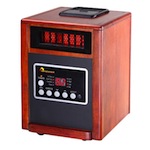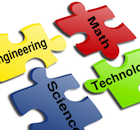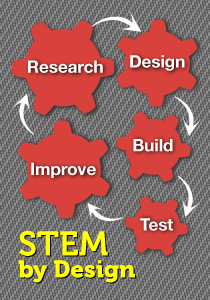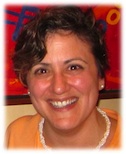Math & STEM: Going Deeper
My STEM curriculum-writing colleague Carolyn DeCristofano agreed to be a guest author again this week, much to my delight. Carolyn is a top-notch STEM specialist, President of Blue Heron STEM Education, and an acclaimed author who has written publications for NOVA and the Boston Museum of Science. I’m turning this space over to her. You’re in excellent hands! – Anne Jolly
 by Carolyn DeCristofano
by Carolyn DeCristofano
After Martha Reicks’ recent guest post on this blog (Is Math Too Often an Afterthought in STEM Learning?) I knew I just had to respond. Really – I had to. (Master blogger Anne Jolly saw to that!)
I value Martha’s post. It raises an important question about math/STEM integration and gently urges us all to examine our practices. I was also inspired (with Anne’s help) to reflect on the curriculum development approaches that Engaging Youth in Engineering (the program in Mobile AL that both Anne and I consult for) and other STEM curriculum teams have taken to integrating math with an engineering challenge—without making math feel like an afterthought.
One helpful approach is to think in terms of the roles math plays in engineering; then we can try to develop engineering-centered units in which the students experience math in one of those roles. Here I provide two roles as examples. It may seem at first that the math is subjugated to serve engineering, but I believe that the engineering is also serving math instruction. Perhaps this two-way relationship is the essence of integration.
One caveat before I go much further: Since I am not a mathematics specialist by training, what I have to say is from the perspective of someone who tumbled into STEM from the S perspective, and since then has been engaged in integrating “my” letter with all the others.
Two Roles of Math in Engineering
(1) Measuring the performance of engineered designs
Perhaps you want know if Bounty is a quick picker-upper. Or maybe you wonder if your second wind turbine design generates more electricity than your first design. In situations like this, you need to make some observations and rank the performance based on what you notice. Often—but not always– these observations are in the form of specific measurements. But which measurements? And what do the measurements mean in terms of performance? Every situation has its own unique answers.
Say, for example, we ask students to design absorbent, reusable towels to replace paper towels. We could use the mass of the absorbed liquid as a measure of the towel’s performance. However, if we want students to learn about volume, we would instead devise a test that involves measuring the volume of the liquid in some way. That’s pretty straightforward. But there are other rich mathematical learning opportunities beyond these initial ideas—if we dig deeper.
In this example, let’s look at what a fair comparison of towel performance might involve. Questions you might ask are:
► Should we all have the same mass of paper toweling or the same surface area? Why?
► What should the surface area of the spill be? Does its depth matter? How does this relate to real spills?
► Does time allowed for absorption play a role in the results?
► When we look at whether a towel design improves over time, are we looking at raw measurements (X more liquid is absorbed) or one trial compared to a baseline (the second design absorbed 15% more or less than the first)?

Students begin to see that reducing their measurements to a unit rate enables the comparisons they truly want to make. This gives them the appetite to learn and a meaningful context in which to understand what a unit rate is and how to calculate it.
Back to the towels: When we as educators think through the list of possible ways to measure the performance of towels for ourselves, we can identify which options most closely correlate to high priority math content in a given classroom context.
Informed by these insights, we can design the learning experiences so that students will encounter the target content through questions about measuring the performance of their designs. They then learn and practice the related content as an integral part of their engineering. The engineering design challenge frames all of this, so that the content and issues are concrete.
Ultimately, you may even begin to bring students into this kind of thinking, allowing them to think through how to measure the performance of their designs. This will give them opportunities for intellectual autonomy.
(2) Guiding Design Decisions – Predictive Analysis
Here’s a second role that math plays in engineering. A good deal of professional engineering is about developing and using mathematical models – often in the form of formulas – to help design a technology.

This particular analysis, while possibly sophisticated for a middle school student, highlights a broader idea about how math “works” in engineering. Middle school students as engineers can use simple equations, tables, and/or graphs to help guide their decisions about their design ideas. Suppose, for example, that students are designing models of plant growth chambers for a Mars mission. They examine a graph of initial soil moisture and plant growth over a 2-week period. They might extrapolate what the plant growth would be in 3 weeks and use that information in a decision about how much water to add to their own designs.
This use of data in the context of making design decisions can be fruitful—especially if the data has some ambiguity to it. If it does not suggest one particular design solution, and if the design goal involves enough complexity, then data can ground the work without narrowing creativity.
In addition, using less-than-perfectly patterned data can also help develop students’ understanding of the strengths and limitations of data in helping to guide decisions, in the classroom and in broader policy. Their design experiences can become a kind of case study for broader issues.
In the context of their designs, students can consider issues such as how certain they are that a specific pattern exists, and how to move forward despite some uncertainty. They might also identify any questions raised about how the data was collected or the study conducted. They can think about whether conclusions and decisions other than their own might be reasonable. These considerations offer opportunities for authentic critical thinking, in a context that helps the math make sense.

If you’ve used math in STEM, please share how you did that. And if you’ve used STEM to teach math, let’s hear about that, too! Giving math all that it deserves may be one of the more difficult aspects of implementing STEM.































